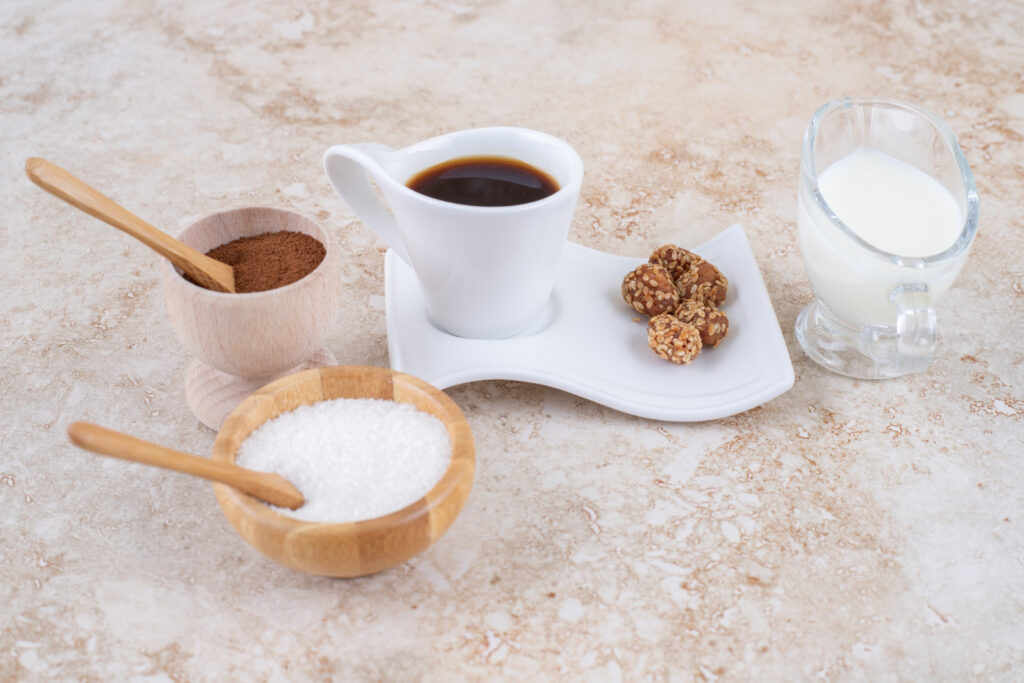
In this article
The average American consumes 22 teaspoons of sugar daily—over three times the recommended amount. Excessive sugar intake can lead to obesity, type 2 diabetes, and heart disease. However, quitting sugar can be challenging because it hides in many foods, such as yogurt, condiments, sports drinks, and cereals. Fortunately, there are strategies to help you reduce your sugar intake effectively. Here are nine tips on how to quit sugar and maintain your commitment.
1. Read the Label Details
Understanding what foods contain sugar, whether hidden or not, is crucial. Sugar can be listed under various names, such as:
- Cane sugar
- Corn sweetener
- Fruit juice concentrates
- Fruit nectar
- High fructose corn syrup
- Honey
- Maltose
- Molasses
- Raw sugar
- Sucrose
- Syrup
- Turbinado sugar
Check the Nutrition Facts label for “added sugars” and “total sugars.” One gram of sugar equals four calories, so if a product has 15 grams of sugar per serving, that’s 60 calories from sugar alone.
2. Limit White Sugar
Refined white sugar, commonly added to coffee and baked goods, is quickly absorbed into the bloodstream, causing blood glucose and insulin surges that can be harmful. Refined sugar is also added to many processed foods, often labeled as cane sugar or high fructose corn syrup. These can be found in products like ketchup, bread, salad dressing, and dried fruit.
3. Switch Out Sugary Drinks
Sodas, fruit juices, sports drinks, and sweetened beverages can contain high amounts of added sugar. For example, a can of soda has about 9 teaspoons of sugar, exceeding the 6-teaspoon daily limit suggested by the American Heart Association. Substitute soda with seltzer water, and opt for fruit-infused water instead of fruit juices.
4. Reorganize Foods at Home
If your household isn’t reducing sugar, designate one drawer or shelf for sugary treats to avoid constant temptation. This way, you won’t see sugary products every time you open the cabinet or fridge.
5. Make Foods and Drinks from Scratch
Preparing foods and drinks at home allows you to control the sugar content. Instead of buying ready-made pasta sauce or condiments, make them yourself using fresh ingredients, thereby reducing or eliminating added sugar.
6. Swap Treats With Simple Carbs
Pastries, cookies, muffins, and white bread often contain refined flour and added sugar. These can spike blood sugar levels and lead to energy crashes. Opt for whole-grain versions of these foods, which are absorbed more slowly and provide steady energy.
7. Remember Sugars in Restaurant Foods
Fast food and restaurant items often contain hidden sugars. A study found an average of 11 grams of sugar per 100-gram serving in food and drinks from major fast-food chains. Many takeout foods use sugar-laden sauces and coatings. Check the nutritional information before ordering and ask if dishes can be prepared without added sugar.
8. Don’t Stop Sugar Cold Turkey
Quitting sugar abruptly can lead to withdrawal symptoms like headaches. Gradually reducing sugar intake allows your body to adjust. For example, if you usually add two spoonfuls of sugar to your coffee, cut down to one spoonful for a week before eliminating it completely.
9. Pile on Protein and Healthy Fats
Eating more lean proteins (like eggs, turkey, and legumes) and healthy fats (such as nuts, olive oil, and avocado) helps keep you feeling full and energized. This can prevent the blood sugar spikes and crashes associated with sugary foods.
Health Benefits of Cutting Down on Sugar
Reducing sugar intake can lead to numerous health benefits, including:
- Lower risk of dental problems like cavities
- Improved weight management and blood sugar regulation
- Reduced risk of heart disease, obesity, and type 2 diabetes
Are Artificial Sweeteners Better?
Swapping sugar for artificial sweeteners like aspartame or saccharin might help reduce added sugar intake. However, artificial sweeteners are much sweeter than natural sugar and might not satisfy hunger, leading to increased cravings.
Healthy Alternatives
Natural sugars found in foods, such as fructose in fruit and lactose in milk, are healthier options. Fruits contain sugar in balanced proportions with fiber and other nutrients. To satisfy a sweet tooth, use spices like cinnamon, vanilla extract, chicory, ginger, nutmeg, and cardamom in beverages and meals. Citrus zest also provides a natural sweetness.
When to Talk to a Healthcare Provider
If you have concerns about your sugar intake or are at risk of developing diabetes, consult a healthcare provider or registered dietitian. They can provide personalized advice on reducing sugar and suggest suitable food and drink alternatives.
By following these tips, you can effectively reduce your sugar intake and enjoy the numerous health benefits that come with a lower-sugar diet
A Quick Review
Quitting sugar can improve your health significantly by reducing risks of obesity, type 2 diabetes, and heart disease. Gradual reduction, reading food labels, and substituting sugary foods with healthier options like whole grains, lean proteins, and healthy fats are effective strategies. Be aware of hidden sugars in processed foods and consider preparing meals from scratch to control sugar intake.











